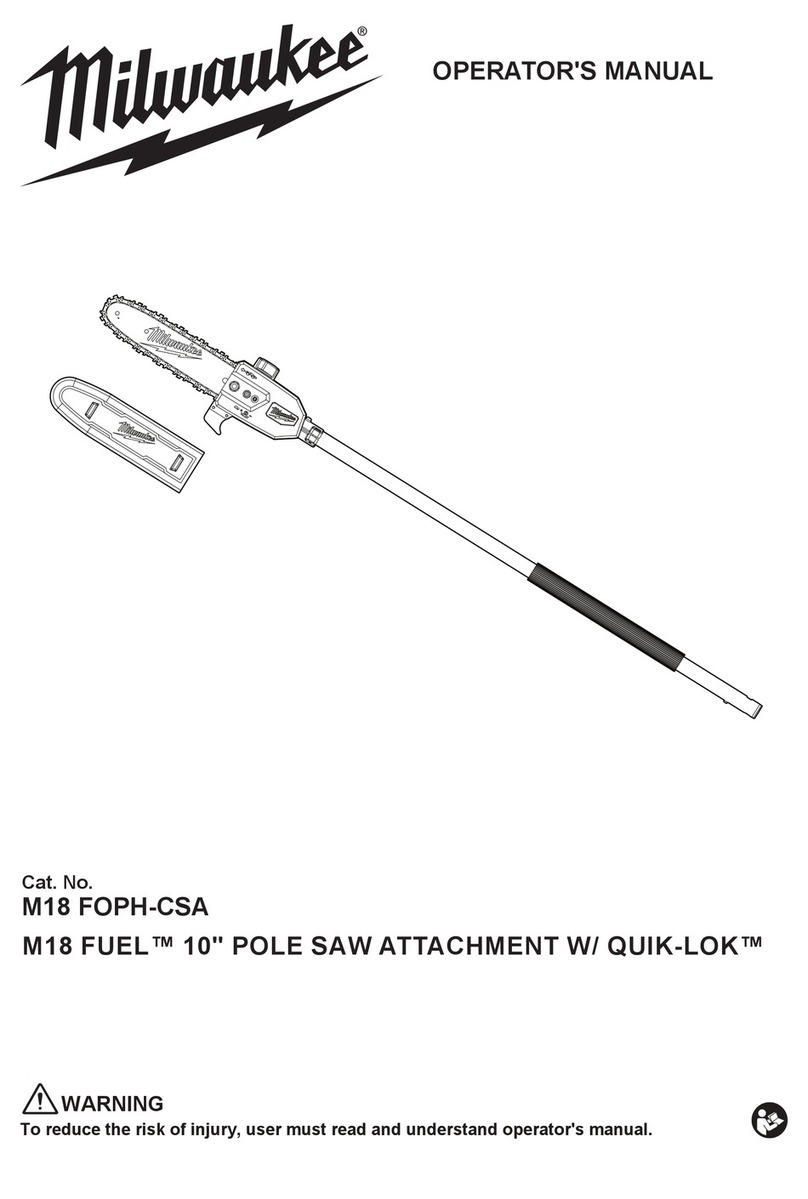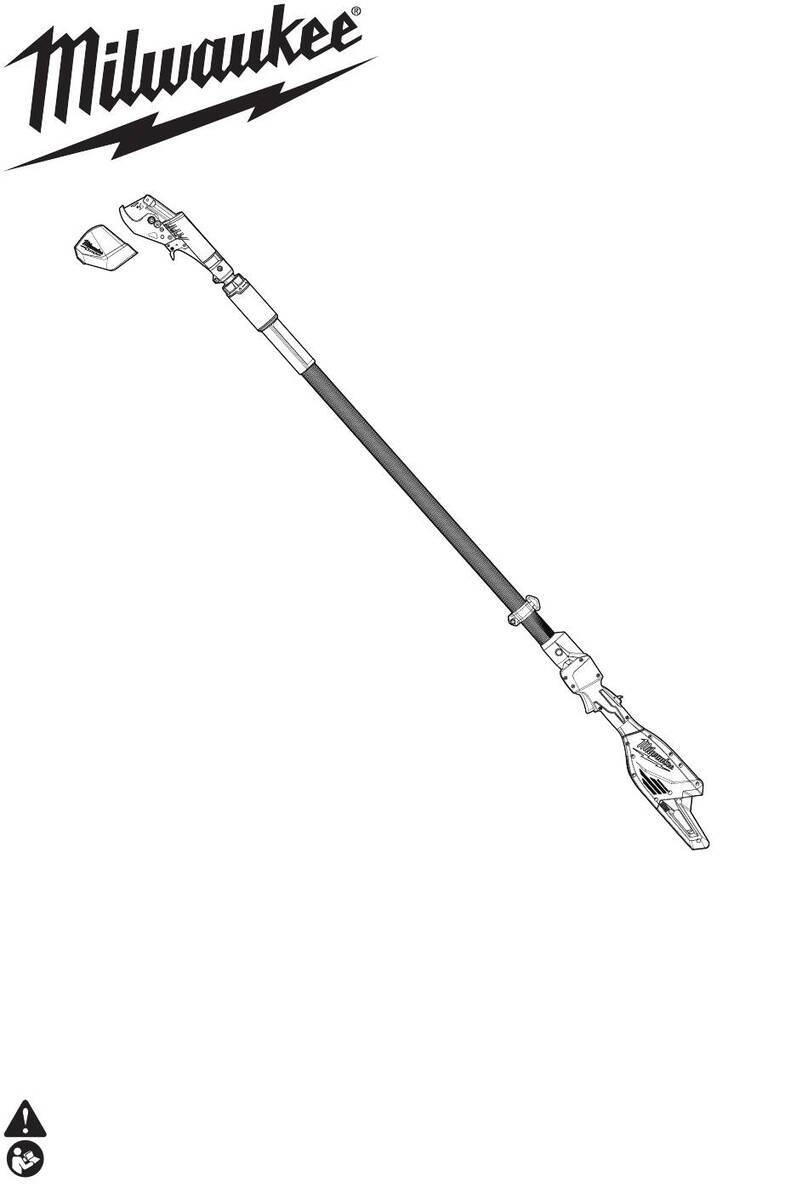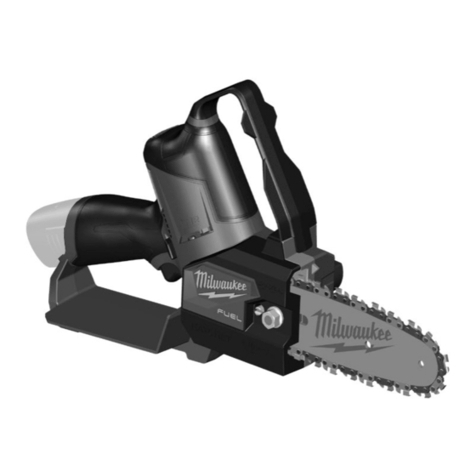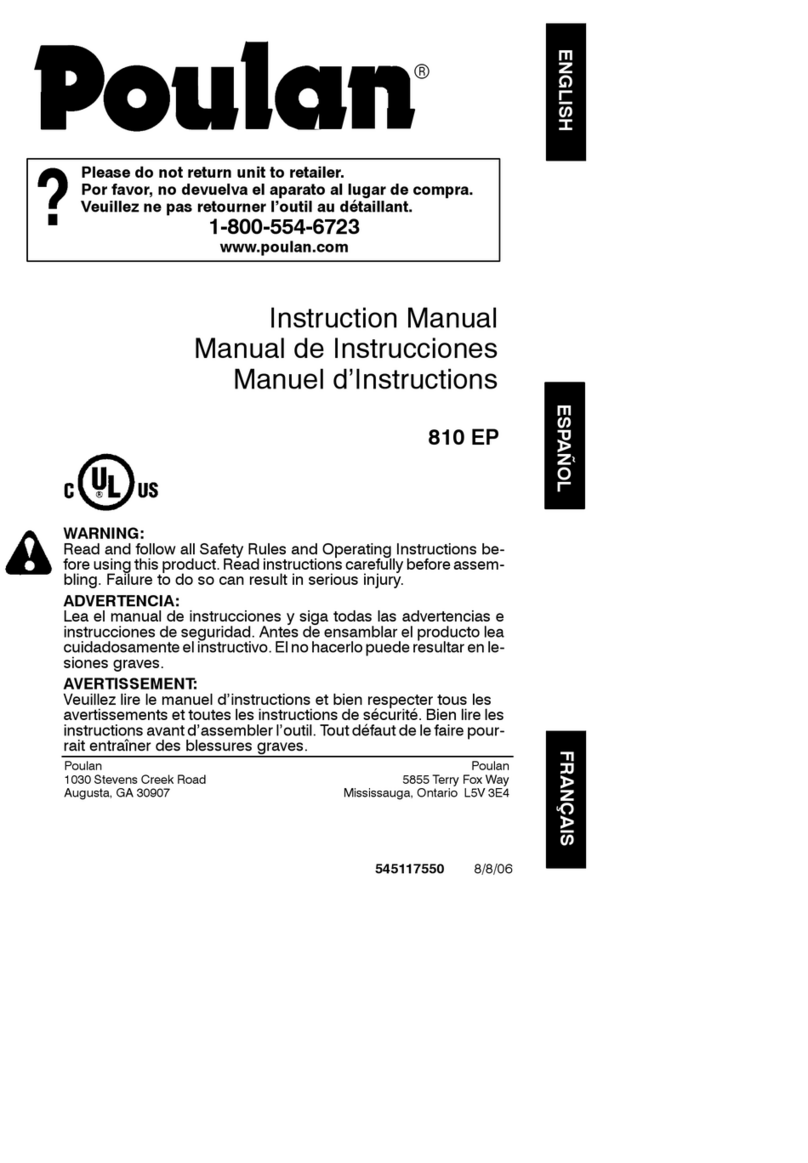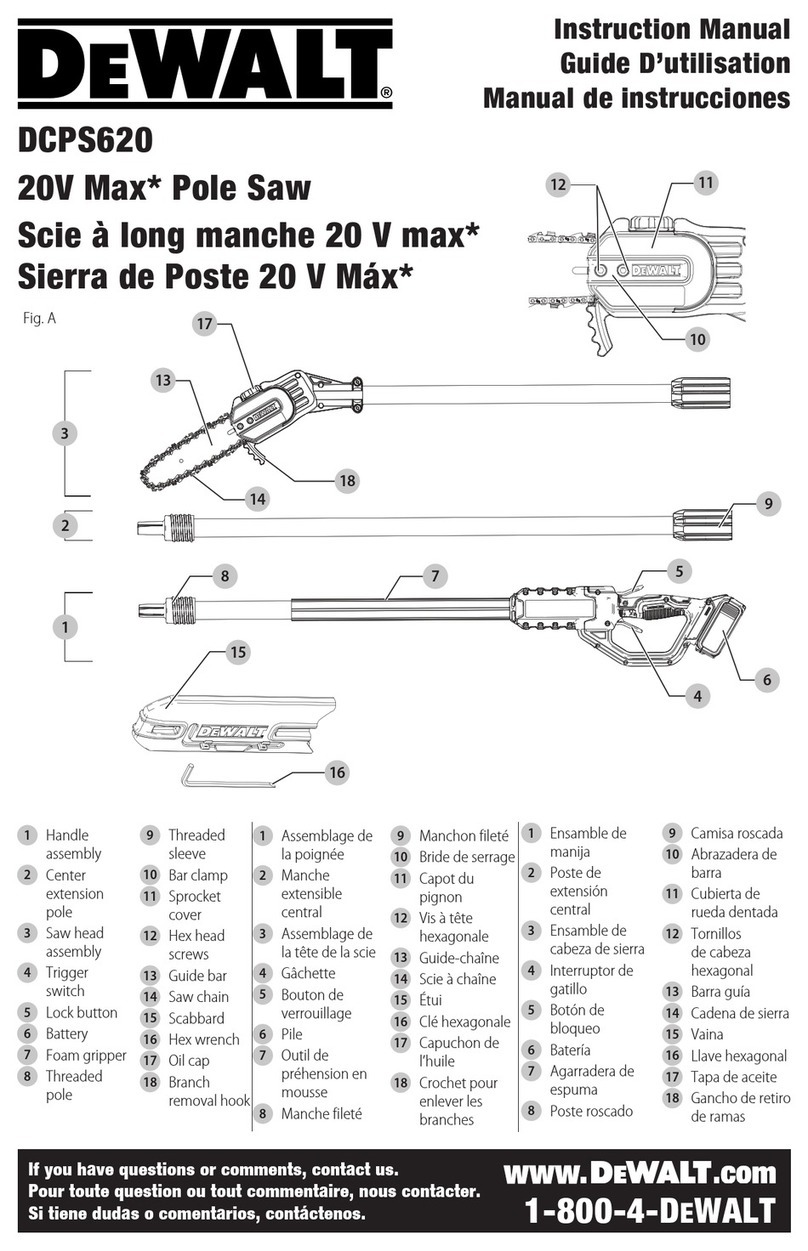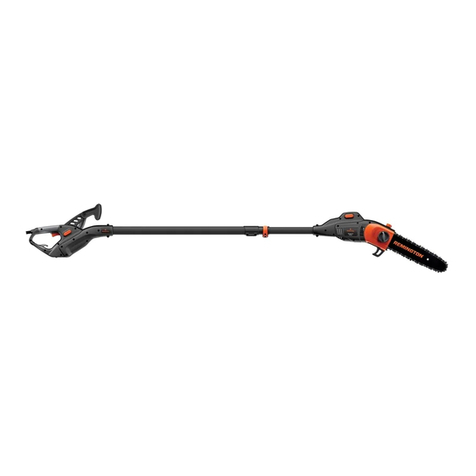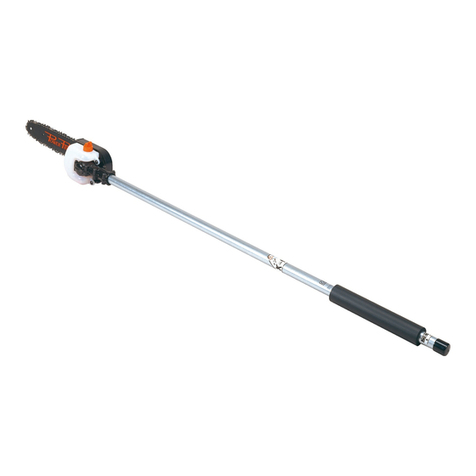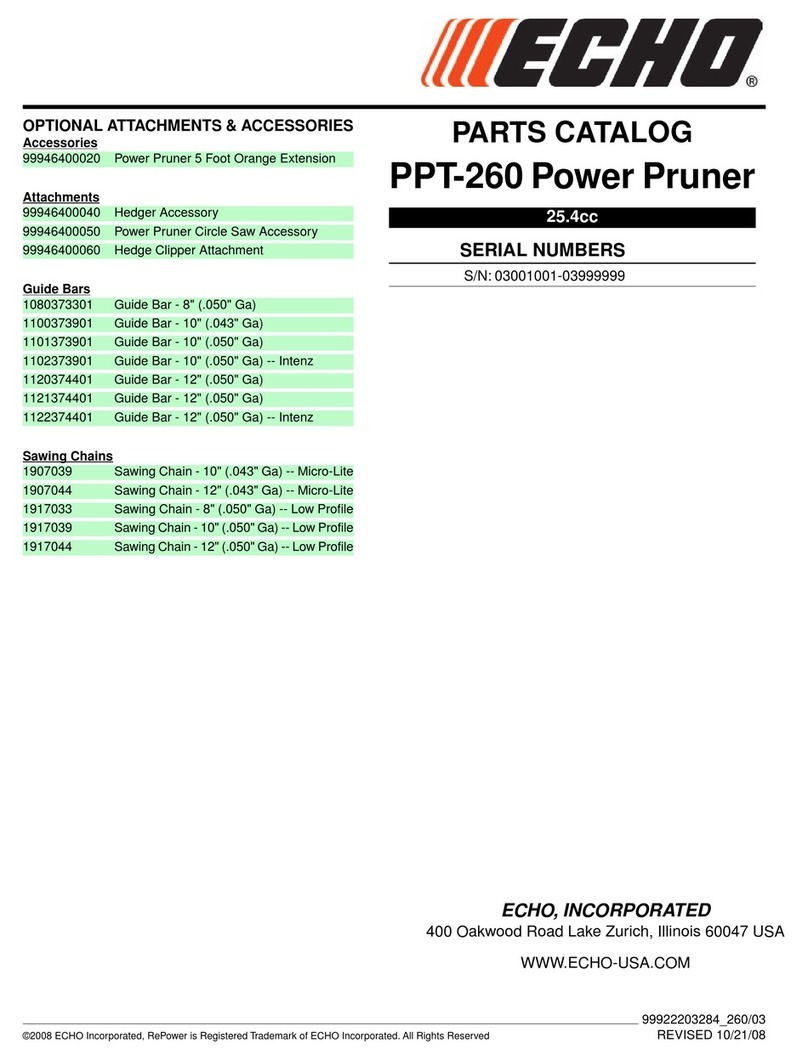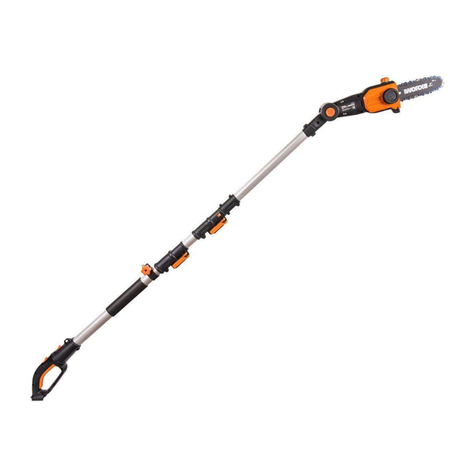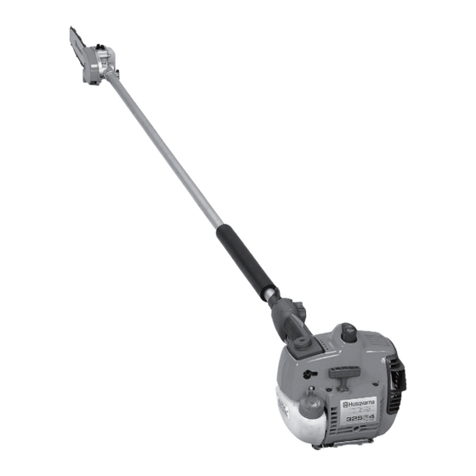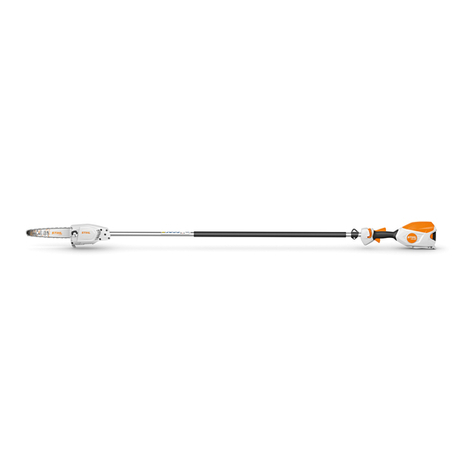
18 19
M18 FOPH-CSA
.......................4697 64 02...
...000001-999999
..................... 0-3700 min-1
..................... 0-4600 min-1
............................8,6 m/s
...........................254 mm
...........................230 mm
...........................140 ml
..........................1,94 kg
.............................85 dB(A)
.............................95 dB(A)
..........................1,54 m/s2
..........................0,65 m/s2
TECHNICAL DATA CORDLESS POLE SAW
Production code...........................................................................
No-load speed, low speed ...........................................................
No-load speed, high speed..........................................................
No-load chain speed....................................................................
Bar length ....................................................................................
Usable cutting length ...................................................................
Chain oil tank capacity.................................................................
Weight according EPTA-Procedure 01/2014 ...............................
Noise/vibration information
Measured values determined according
to EN ISO 22868 / EN ISO 4871.
Typically, the A-weighted noise levels of the tool are:
Sound pressure level (Uncertainty K=1,4dB(A)) ......................
Sound power level (Uncertainty K=1,4dB(A)) ...........................
Wear ear protectors!
Total vibration values (vector sum in the three axes) determined
according to EN ISO 22867.
Vibration ah ...............................................................................
Uncertainty K= ..........................................................................
For technical data and approvals of application heads for use on various powerbases please refer to the operating instructions of the
used application head.
WARNING
The vibration emission level given in this information sheet has been measured in accordance with a standardised test given in EN
ISO 22867 and may be used to compare one tool with another. It may be used for a preliminary assessment of exposure.
The declared vibration emission level represents the main applications of the tool. However if the tool is used for diff erent
applications, with diff erent accessories or poorly maintained, the vibration emission may diff er. This may signifi cantly increase the
exposure level over the total working period.
An estimation of the level of exposure to vibration should also take into account the times when the tool is switched off or when it is
running but not actually doing the job. This may signifi cantly reduce the exposure level over the total working period.
Identify additional safety measures to protect the operator from the eff ects of vibration such as: maintain the tool and the
accessories, keep the hands warm, organisation of work patterns.
ENGLISH ENGLISH
WARNING Read all safety warnings, instructions,
illustrations and specifi cations provided with this power
tool. Failure to follow all instructions listed below may result in
electric shock, fi re and/or serious injury.
Save all warnings and instructions for future reference.
CORDLESS POLE SAW SAFETY WARNINGS
Keep all parts of the body away from the saw chain when
the Pole saw is operating. Before you start the Pole saw,
make sure the saw chain is not contacting anything. A
moment of inattention while operating Pole saws may cause
entanglement of your clothing or body with the saw chain.
Always hold the Pole saw with your right hand on the rear
handle and your left hand on the front handle. Holding the
Pole saw with a reversed hand confi guration increases the risk
of personal injury and should never be done.
Hold the Pole saw by insulated gripping surfaces only,
because the saw chain may contact hidden wiring. Saw
chains contacting a „live“ wire may make exposed metal parts
of the Pole saw „live“ and could give the operator an electric
shock. (war bei der Astsäge dabei, macht aber eigentlich
keinen Sinn)
Wear eye protection. Further protective equipment for
hearing, head, hands, legs and feet is recommended.
Adequate protective equipment will reduce personal injury from
fl ying debris or accidental contact with the saw chain.
Do not operate a Pole saw in a tree, on a ladder, from a
rooftop, or any unstable support. Operation of a Pole saw in
this manner could result in serious personal injury.
Always keep proper footing and operate the Pole saw only
when standing on fi xed, secure and level surface. Slippery
or unstable surfaces may cause a loss of balance or control of
the Pole saw.
When cutting a limb that is under tension, be alert for
spring back. When the tension in the wood fi bres is released
the spring loaded limb may strike the operator and /or throw the
Pole saw out of control.
Use extreme caution when cutting brush and saplings. The
slender material may catch the saw chain and be whipped
toward you or pull you off balance.
Carry the Pole saw by the front handle with the Pole saw
switched off and away from your body. When transporting
or storing the Pole saw, always fi t the guide bar cover.
Proper handling of the Pole saw will reduce the likelihood of
accidental contact with the moving saw chain.
Follow instructions for lubricating, chain tensioning and
changing the bar and chain. Improperly tensioned or
lubricated chain may either break or increase the chance for
kickback.
Keep handles dry, clean, and free from oil and grease.
Greasy, oily handles are slippery causing loss of control.
Cut wood only. Do not use Pole saw for purposes not
intended. For example: do not use Pole saw for cutting
metal, plastic, masonry or non-wood building materials.
Use of the Pole saw for operations diff erent than intended
could result in a hazardous situation.
Do not attempt to fell a tree. Serious injury could occur to the
operator or bystanders while felling a tree.
Follow all instructions when clearing jammed material,
storing or servicing the Pole saw. Make sure the switch is
off and the battery pack is removed. Unexpected actuation
of the Pole saw while clearing jammed material or servicing
may result in serious personal injury.
Causes and operator prevention of kickback:
Kickback may occur when the nose or tip of the guide bar
touches an object, or when the wood closes in and pinches the
saw chain in the cut.
Tip contact in some cases may cause a sudden reverse
reaction, kicking the guide bar up and back towards the
operator.
Pinching the saw chain along the top of the guide bar may push
the guide bar rapidly back towards the operator.
Either of these reactions may cause you to lose control of the
saw which could result in serious personal injury. Do not rely
exclusively upon the safety devices built into your saw.
As a Pole saw user, you should take several steps to keep your
cutting jobs free from accident or injury.
Kickback is the result of tool misuse and/or incorrect operating
procedures or conditions and can be avoided by taking proper
precautions as given below:
Maintain a fi rm grip, with thumbs and fi ngers encircling the
Pole saw handles, with both hands on the saw and
position your body and arm to allow you to resist kickback
forces. Kickback forces can be controlled by the operator, if
proper precautions are taken. Do not let go of the Pole saw.
Do not overreach. This helps prevent unintended tip contact
and enables better control of the Pole saw in unexpected
situations.
Only use replacement bars and chains specifi ed by the
manufacturer. IIncorrect replacement guide bars and chains
may cause chain breakage and/or kickback.
Follow the manufacturer’s sharpening and maintenance
instructions for the saw chain. Decreasing the depth gauge
height can lead to increased kickback.
National regulations may restrict the use of the Pole saw.
Note the local regulations.
ADDITIONAL SAFETY AND WORKING INSTRUCTIONS
Ensure all guards, handles, are properly fi tted and are in good
condition.
Persons using the Pole saw should be in good health. The Pole
saw is heavy, so the operator must be physically fi t.
The operator should be alert, have a good vision, mobility,
balance, and manual dexterity. If there is any doubt, do not
operate the Pole saw.
Do not start using the Pole saw until you have a clear work
area and secure footing. Beware of the emission of lubricant
mist and saw dust.Wear a mask or respirator, if required.
Do not cut vines and/or small undergrowth (less than 75 mm in
diameter).
Always hold the Pole saw with both hands during operation.
Use a fi rm grip with thumbs and fi ngers encircling the Pole saw
handles. Right hand must be on the rear handle and left hand
on the front handle.
Before starting the Pole saw, make sure the saw chain is not
contacting any object.
Do not modify the Pole saw in any way or use it to power any
attachments or devices not recommended by the manufacturer
for your Pole saw.
There should be a fi rst-aid kit containing large wound dressings
and a means to summon attention (e.g., whistle) close to the
operator. A larger more comprehensive kit should be
reasonably nearby.
An incorrectly tensioned chain can jump off the guide bar and
could result in serious injury or fatality. The length of the chain
depends on the temperature. Check the tension frequently.
You should get used to your new Pole saw by making simple
cuts on securely supported wood. Do this whenever you have
not operated the saw for some time. To reduce the risk of injury
associated with contacting moving parts, always stop the
motor, remove the battery pack and make sure all moving parts
have come to a stop before.
• cleaning or clearing a blockage
• leaving the machine unattended
• installing or removing attachments
• checking, conducting maintenance or working on the
machine
Do not cut with your body in line with the guide bar and chain. If
you experience kickback, this will help prevent the chain
coming into contact with your head or body.
Do not use a back-and-forward sawing motion, let the chain do
the work. Keep the chain sharp and do not try to push the chain
through the cut.
Do not put pressure on the saw at the end of the cut. Be ready
to take on the weight of the saw as it cuts free from the wood.
Failure to do so could result in possible serious personal injury.
Do not stop the saw in the middle of a cutting operation.
Keep the saw running until it is already removed from the cut.
Do not fi x the on/off switch in the „on“ position when using the
saw hand-held.
Remove the battery pack before starting any work on the
appliance.
WARNING! To reduce the risk of fi re, personal injury, and
product damage due to a short circuit, never immerse your tool,
battery pack or charger in fl uid or allow a fl uid to fl ow inside
them. Corrosive or conductive fl uids, such as seawater, certain
industrial chemicals, and bleach or bleach containing products,
etc., can cause a short circuit.
Use only System M18 chargers for charging System M18
battery packs. Do not use battery packs from other systems.
Never break open battery packs and chargers and store only in
dry rooms. Keep dry at all times.
Push and pull
The reaction force is always opposite to the direction the chain
is moving. Thus, the operator must be ready to control the
tendency for the machine to pull away (forward motion) when
cutting on the bottom edge of the bar and the push backwards
(towards the operator) when cutting along the top edge.
Reaction
Reaction
Direction of
rotation
Direction of
rotation
Saw jammed in the cut
Stop the Pole saw and make it safe. Do not try to force the
chain and bar out of the cut as this is likely to break the chain,
which may swing back and strike the operator. This situation
normally occurs because the wood is incorrectly supported
which forces the cut to close under compression, thereby
pinching the blade. If adjusting the support does not release the
bar and chain, use wooden wedges or a lever to open the cut
and release the saw. Never try to start the Pole saw when the
guide bar is already in a cut or kerf.
Skating / Bouncing
When the Pole saw fails to dig in during a cut, the guide bar
can begin hopping or dangerously skidding along the surface of
the log or branch, possibly resulting in the loss of control of the
Pole saw. To prevent or reduce skating or bouncing, always
use the saw with both hands make sure the saw chain
establishes a groove for cutting.Never cut small, fl exible
branches or brushes with your Pole saw. Their size and
fl exibility can easily cause the saw to bounce towards you or
bind up with enough force to cause a kickback. The best tool
for that kind of work is a hand saw, pruning shears, an axe or
other hand tools.

